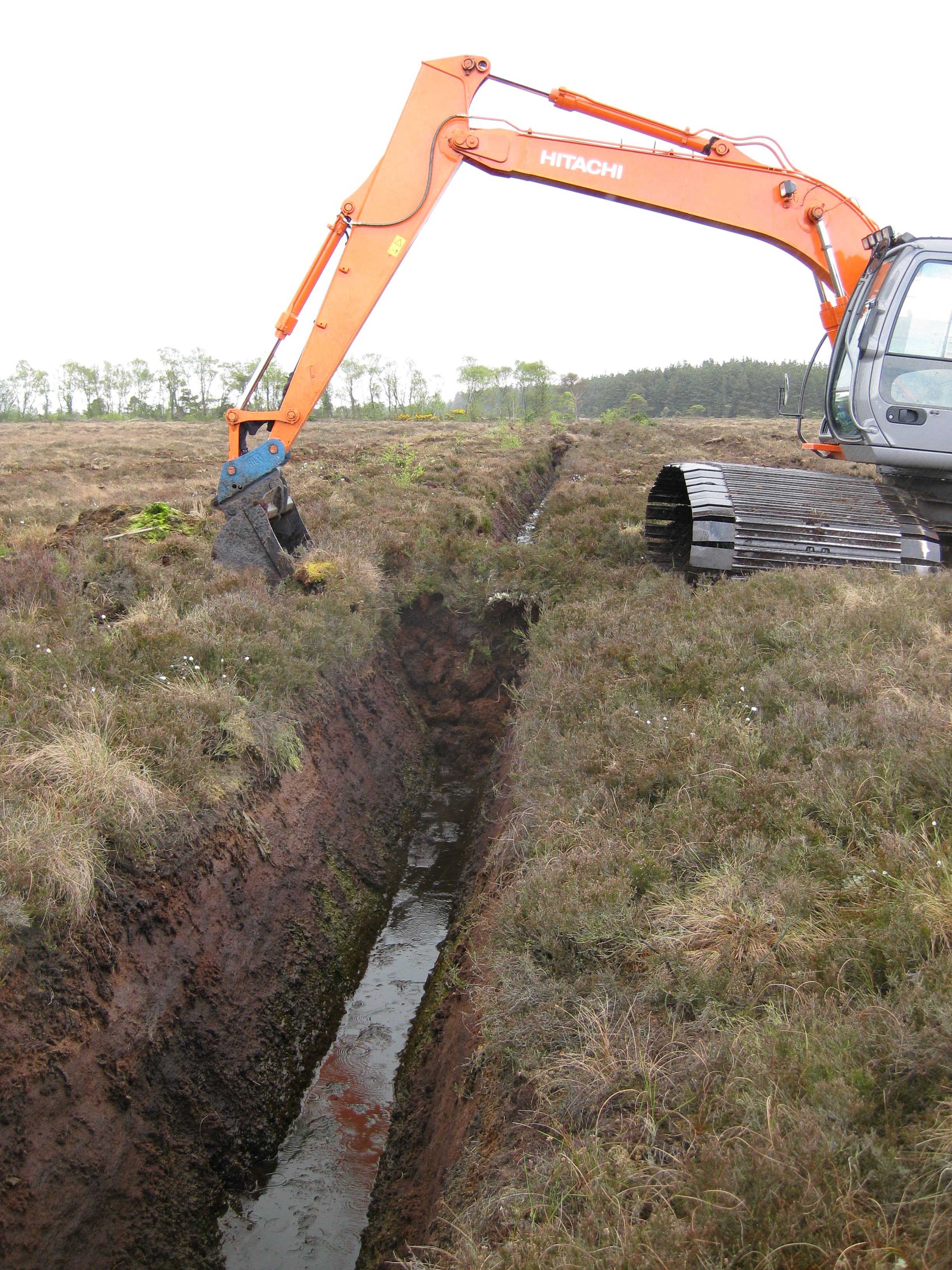Life Project on Ferbane Bog
The current conservation objective for Ferbane Bog is to restore the area of Active Raised Bog to the area present when the Habitats Directive came into force in 1994. In the case of Active Raised Bog, the objective also includes the restoration of Degraded Raised Bog.
The Area objective for Active Raised Bog (all on the high bog) is 43.51ha – almost double the existing area of active raised bog.
Restoration works included the blocking of drains, the construction of over a thousand peat dams and the installation of a number of plastic dams. A drainage management plan and a fire management plan were also drawn up.
Restoration works began here in August 2019 and continued for just over 4 months. In all, some 1,129 peat dams were installed with a number of plastic dams also put in.
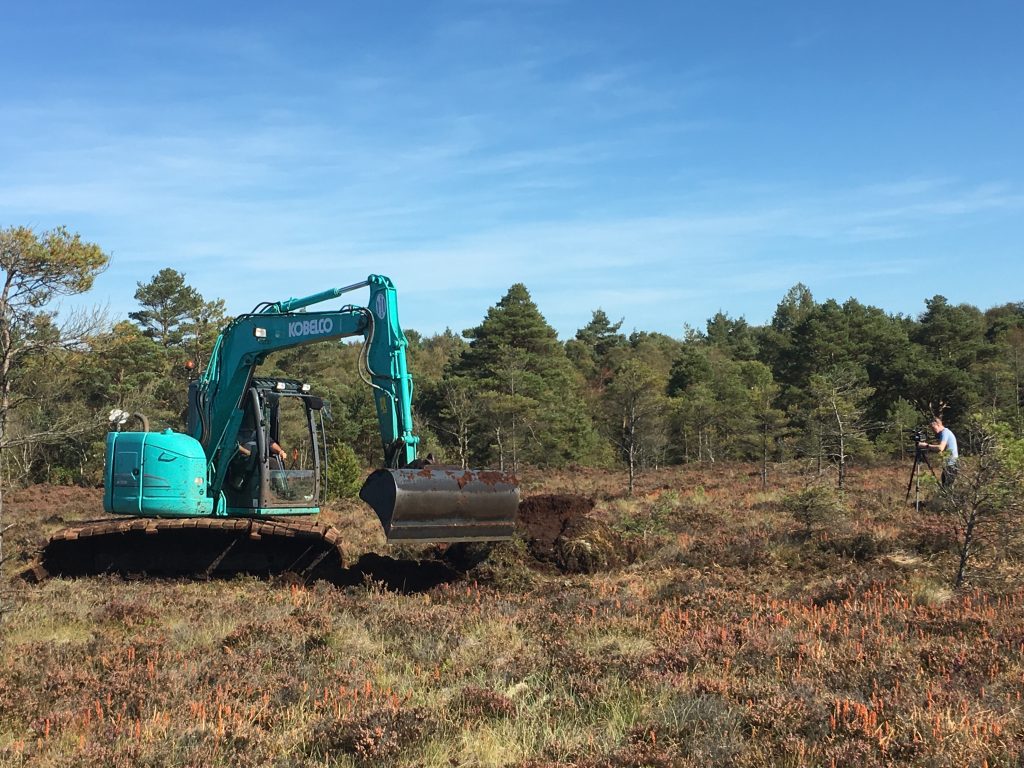
Restoration works on Ferbane during September 2019. Photo: Ronan Casey
Planning permission for visitor facilitation at Ferbane was granted by offaly County Council in 2020. It is planned to commence work on visitor facilities to make this impressive bog more visitor friendly for locals and tourists alike in August 2021. Ferbane Tidy Towns and Gallen Community School in the town assisted greatly with the plans. As well as signs and notice boards, boardwalks, and a special Mary Ward discovery field for science and biodiversity projects, there will be improvements to existing paths and roads alongside parking and a community area.
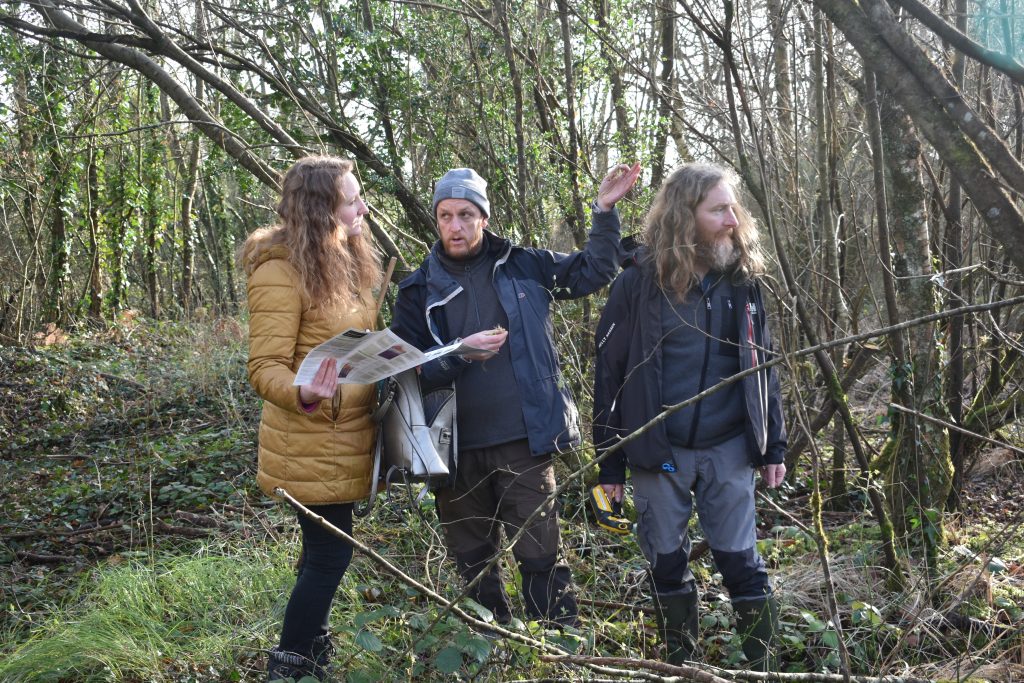
Survey work for visitor facilitation on the bog in 2019
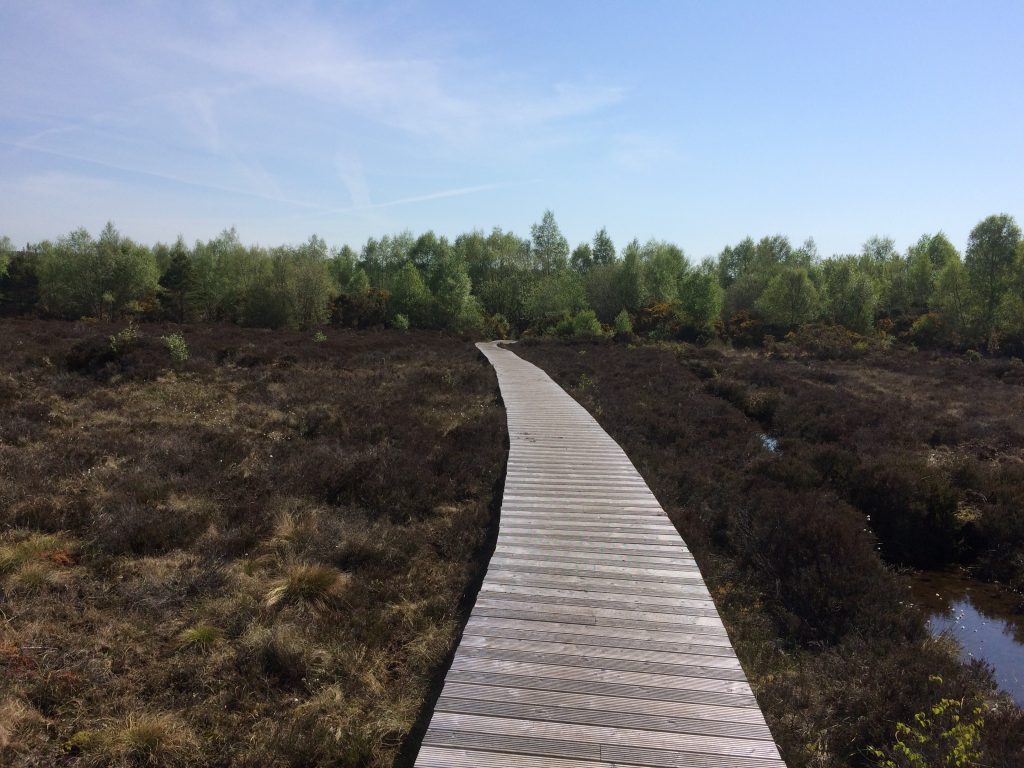
Boardwalks, such as this one in Co Laois, are an option to increase the amenity value of certain Irish raised bogs
OUT ON THE BOG
The objective in relation to Structure and Functions (S&Fs) is that at least half of the Active Raised Bog area should be made up of the central ecotope and active flush (i.e. the wetter vegetation communities). These values have been set as Favourable Reference Values.
Degraded Raised Bog still capable of regeneration should be, according to the interpretation manual, capable of regeneration to ‘active raised bog’ in 30 years if appropriate measures are put in place (i.e. no major impacting activities are present and any necessary restoration works are implemented).
In the past the habitat area was considered to be all high bog not considered to be active, but this is now not accepted as much of the high bog can no longer be restored to active (see DAHG 2014). The remaining non-active high bog is considered supporting habitat for the Annex I habitats on the high bog. This supporting habitat is an essential part of the hydrological unit necessary to support Active and Degraded Raised Bog habitats. The restoration of suitable cutover areas is essential for Active Raised Bog to achieve the favourable conservation condition at the site.
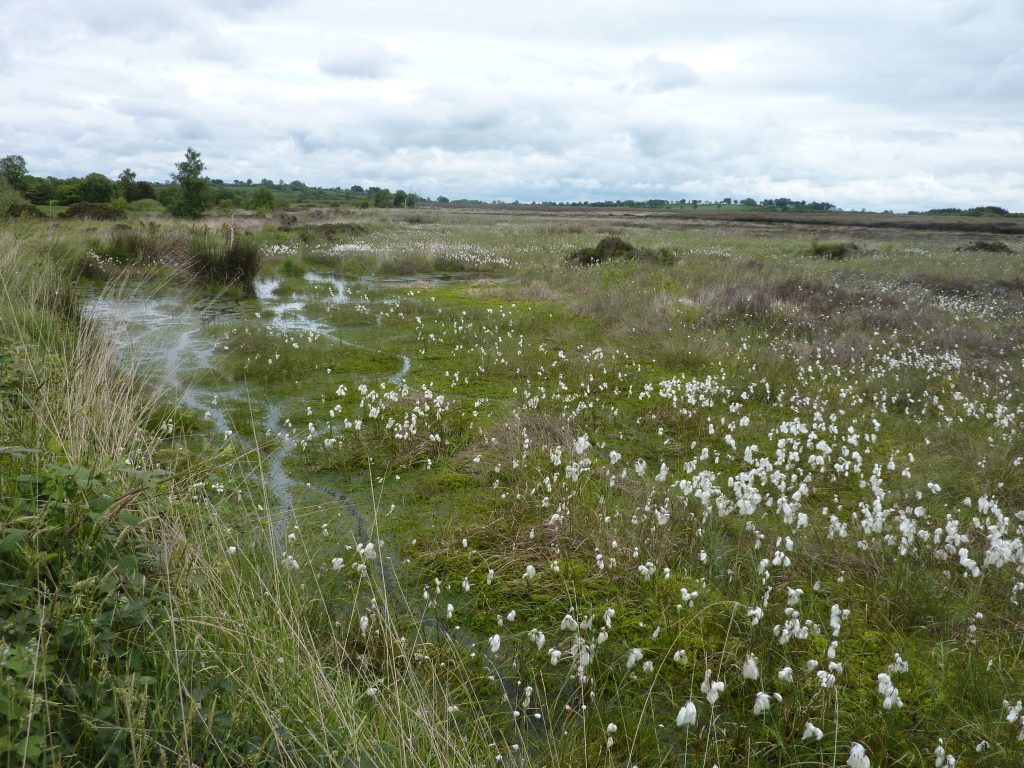
Cutover restoration at Killyconny Bog, Co Cavan.
Nevertheless it is acknowledged that a long period of time (i.e. over 30 years) may be needed after appropriate restoration works are undertaken on the cutover areas for the habitat to develop.
Restoration works along the western cutover of another of our project sites, Killyconny Bog SAC, by a previous LIFE project indicated the occurrence of pioneer ‘active raised bog’ vegetation 8 years after these were undertaken. Based on the close ecological relationship between Active Raised Bog, Degraded Raised Bog and Rhynchosporion depressions, it is considered that should favourable conservation condition for ‘Active Raised Bog’ be achieved on the site, then, as a consequence, favourable conservation condition for the other two habitats would also be achieved.
